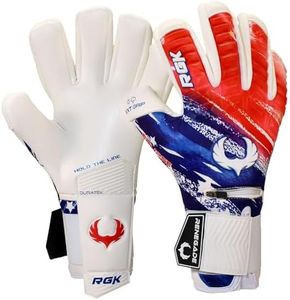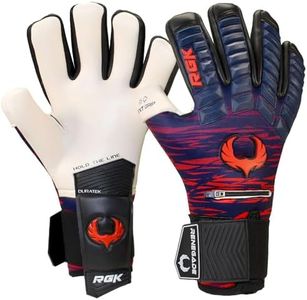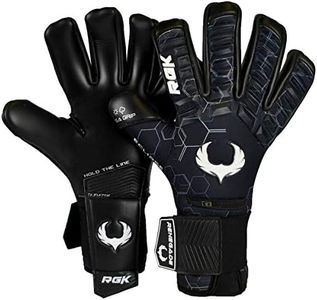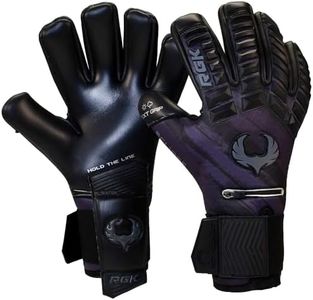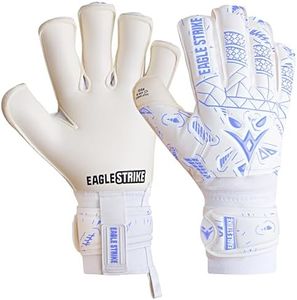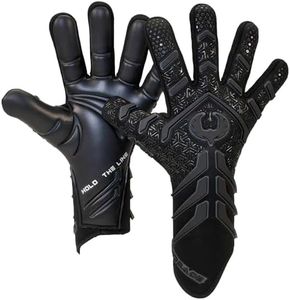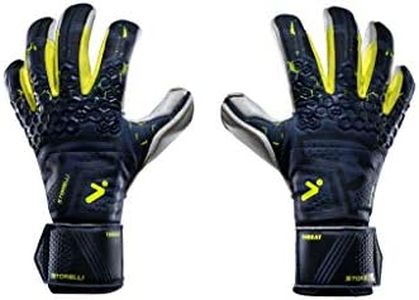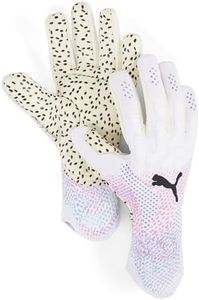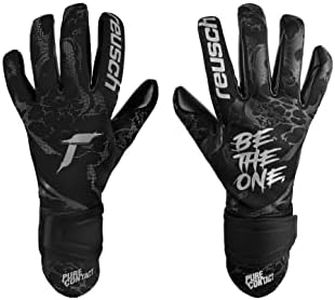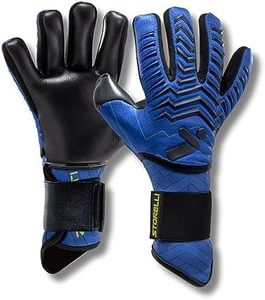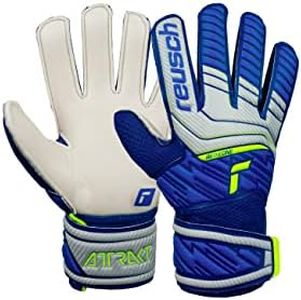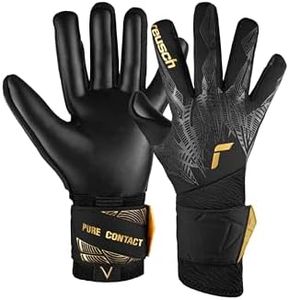We Use CookiesWe use cookies to enhance the security, performance,
functionality and for analytical and promotional activities. By continuing to browse this site you
are agreeing to our privacy policy
10 Best Goalkeeper Gloves
From leading brands and best sellers available on the web.By clicking on a link to a third party's website, log data is shared with that third party.
Buying Guide for the Best Goalkeeper Gloves
Choosing the right goalkeeper gloves is important because they can greatly impact your performance and comfort during play. Instead of just picking gloves based on looks or brand, you should focus on the specs and features that match your playing style, hand size, and level of play. Understanding what each feature does will help you narrow down your options and find gloves that provide the right amount of grip, protection, and fit for you.GripThe grip refers to how sticky or tacky the palm of the glove is, which affects how easily you can catch and hold onto the ball. This is mostly determined by the type of latex or material used on the palm. Softer latex offers better grip, especially in wet weather, but can wear out faster. Harder latex lasts longer but isn't as tacky. If you play in matches and want the best performance, go for gloves with better grip, even if you'll need to replace them more often. For training or casual play, a tougher palm with less grip can be more durable.
CutThe cut is how the glove is stitched and shaped to fit your hand. Common types include flat cut (looser fit, traditional feel), roll finger (fingers are rolled for more latex contact and a snug fit), and negative cut (stitching is inside for a tight fit and more control). If you want a looser, classic feel, go for flat cut. For more latex-to-ball contact and extra confidence in your grip, roll finger is good. If you have slim hands or prefer a close fit, negative cut gloves are often best.
Finger ProtectionSome gloves have extra spines or support inserts in the fingers to help prevent injuries from hard shots and bending backwards. This feature adds protection but can make gloves feel stiffer. If you are worried about finger injuries or play in leagues where the shots are harder, finger protection can be a wise choice. Younger keepers or those recovering from injury also benefit. If you want maximum flexibility and control, choose gloves without this feature.
Fit and SizingGetting the right glove size ensures comfort and performance. Gloves that are too tight can restrict movement and cause discomfort, while those too loose can slip off or make it hard to handle the ball. Glove sizing usually involves measuring the width or length of your hand and matching it to a size chart. Always try gloves on before using them, and make sure there’s a little room at the tips of your fingers, but not so much that the glove feels baggy.
Wrist ClosureThe wrist closure system determines how gloves stay on your hands. Common closures include hook-and-loop straps or elasticated bands. Some gloves have a double strap for extra security. A snug, adjustable closure helps the glove stay in place during games and provides wrist support. Choose the wrist system that feels most secure and comfortable for you—if you like a tight fit and good wrist support, look for an adjustable double strap.
Backhand MaterialThe backhand material provides comfort, breathability, and sometimes extra padding for punching the ball. Thicker backhands give more protection, while thinner or mesh materials offer better breathability and flexibility. If you often punch the ball or want extra protection, heavier padded backhands can be useful. For those who play in hot weather or want a lighter glove, opt for a more breathable backhand.
